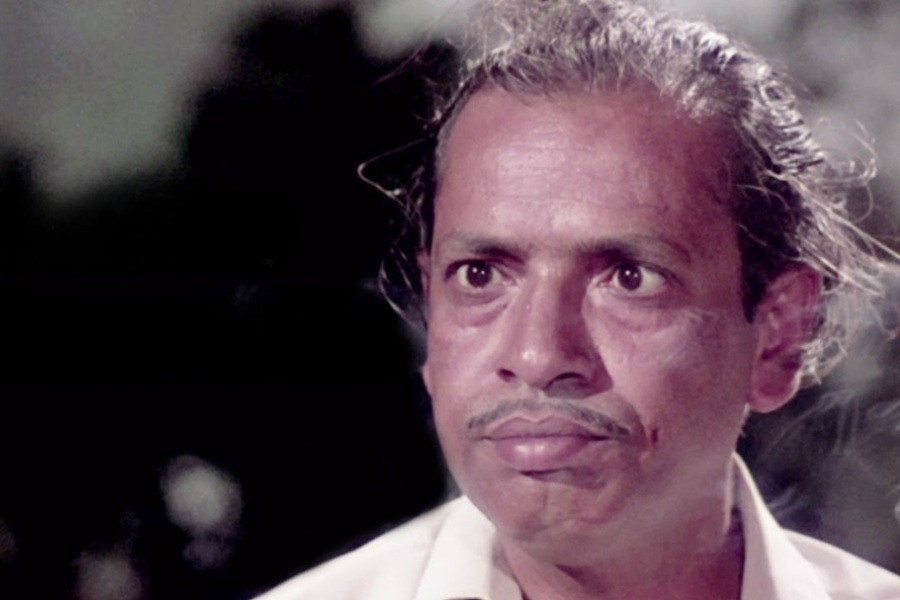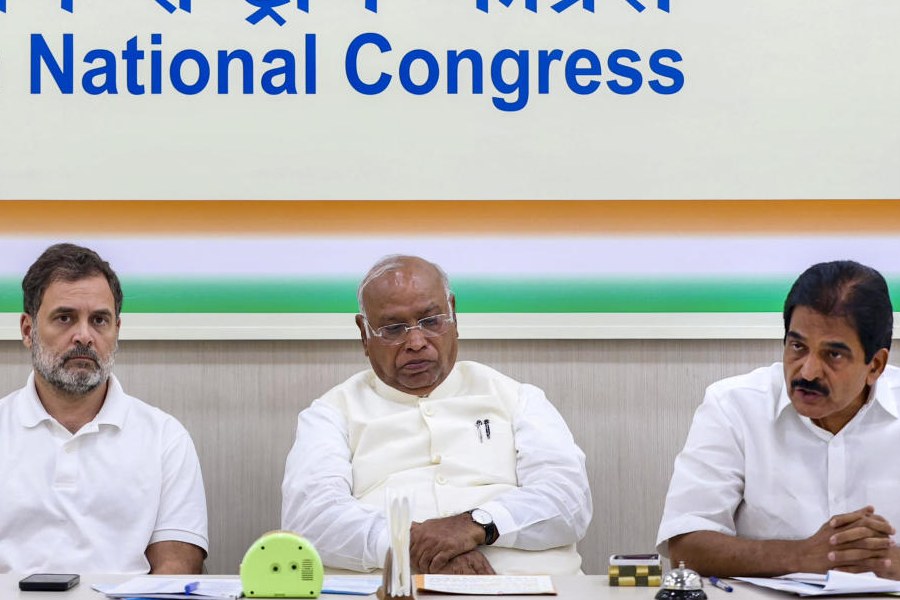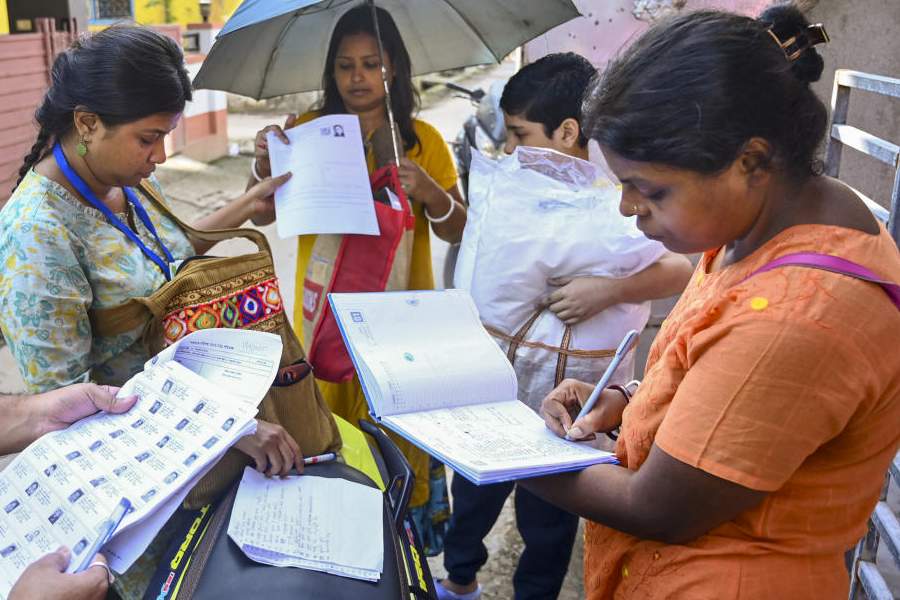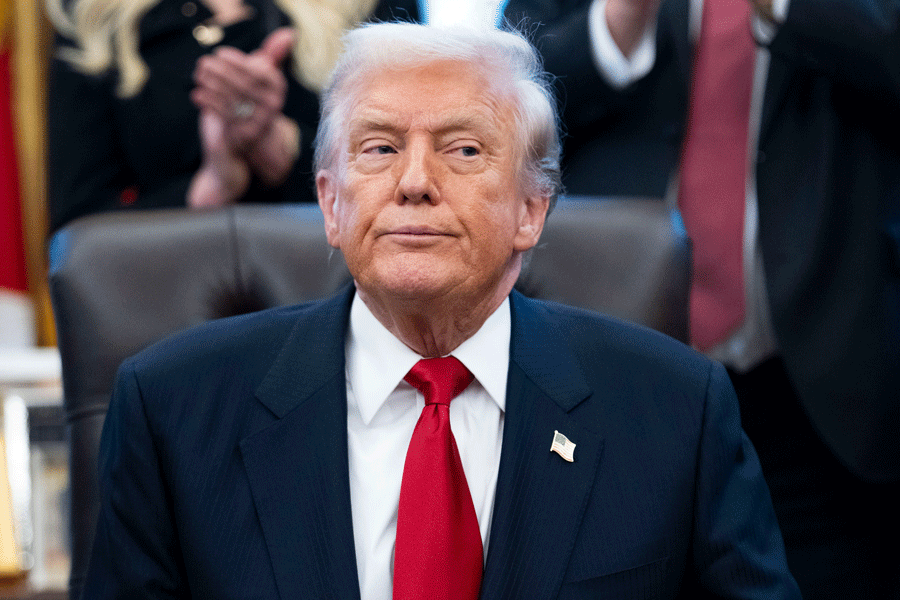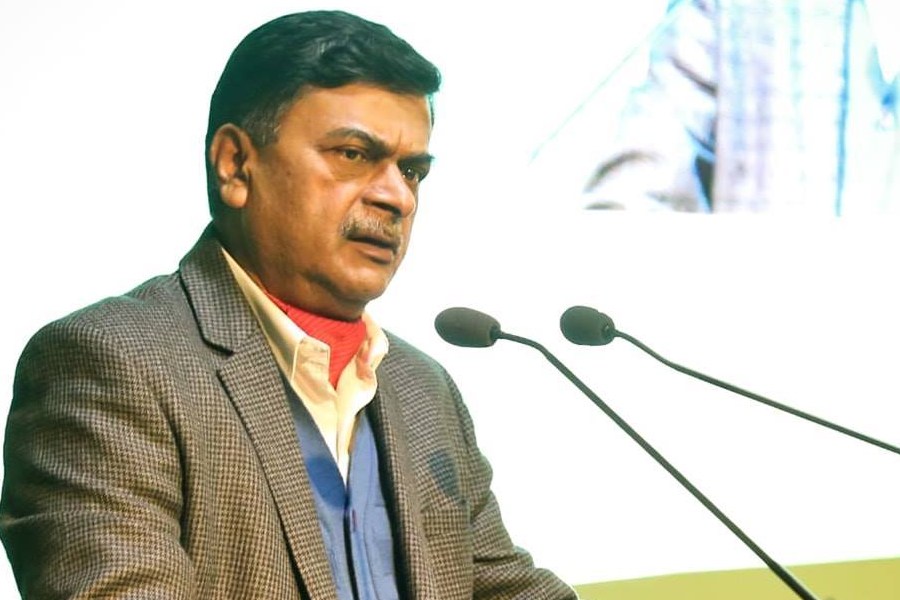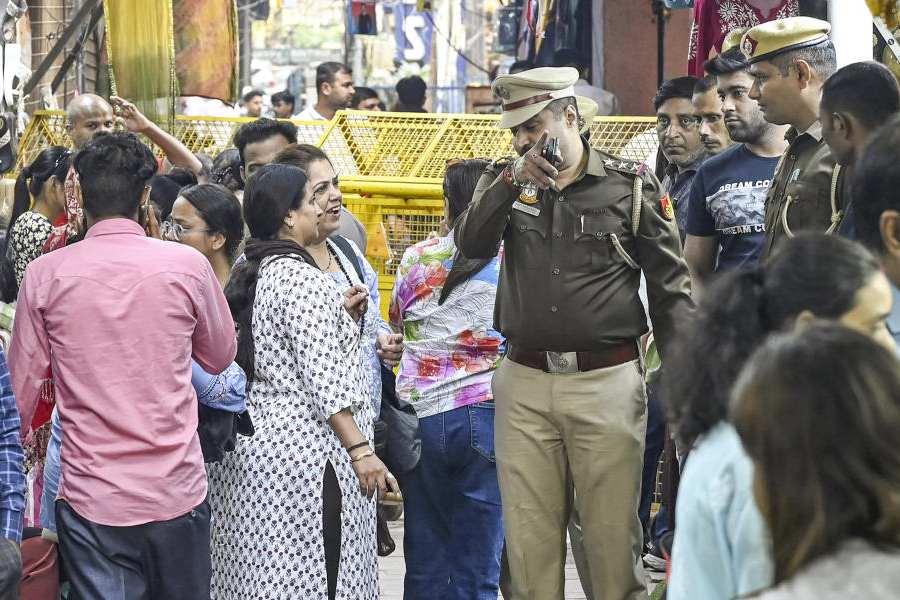In the grand, chaotic, melodious carnival that is Hindi cinema, a handful of actors have managed to carve a niche so distinctive, so inimitably theirs, that even in fleeting appearances, they linger in memory long after the credits roll. Among this illustrious club, Keshto Mukherjee reigns with a hiccup and a glazed look in his eyes — the most celebrated onscreen drunkard Hindi cinema has ever produced.
A master of the slurred soliloquy, the slow-motion stagger and the perfectly timed inebriated non-sequitur, Keshto was typecast, yes, but gloriously so. He turned drunkenness into performance art. He didn’t play drunks; he became them – with empathy, wit and staggering (pun intended) precision.
While many actors have played drunkards in Hindi cinema – from the tragic Devdas to the comic Johnny Walker, with Amitabh Bachchan virtually owning the role in celebrated sequences in Amar Akbar Anthony, Satte Pe Satta and Hum, apart from playing the eponymous Sharabi – Keshto made the role his permanent address.
To understand Keshto’s appeal, one must first understand what he wasn’t. He was never tragic. He wasn’t the Devdas-esque broken man or the fallen hero. Nor was he merely slapstick. Keshto’s comic drunk had shades: he was harmless yet chaotic, sad yet funny, bewildered yet sharp. His characters were never central to the plot but they centred the scene. A brief Keshto cameo could steal a film from under the lead actor’s feet. He had the incredible ability to replicate the physiology and psychology of inebriation. The slow blinks, the misplaced confidence, the meandering logic – he got it all pitch perfect.
Keshto Mukherjee in Ritwik Ghatak’s Cinema
Incredible as it might sound, long before Hindi films typecast him into slurring, stumbling roles, it was Ritwik Ghatak who saw in Keshto a deeper, tragicomic potential, a rawness and vulnerability that could lend credibility to the liminal figures in his stark narratives. He had fleeting appearances in three of Ghatak’s seminal films — Nagarik (1952), Bari Theke Paliye (1958) and Ajantrik (1958).
I have not been able to access a print of Nagarik but in Bari Theke Paliye, Keshto plays an eccentric street magician that the runaway child, Kanchan, comes across in the teeming city of Kolkata. A liminal figure, both terrifying and wondrous, Keshto’s magician is a symbol of the city’s seductive chaos. He’s not the polished conjuror of childhood fantasies but a grimy street performer, dishevelled and mysterious. In a sequence stretching almost five minutes, Keshto embodies the contradictions of urban life, where magic is a mask for suffering and illusion a form of survival. Keshto’s haunting gaze, his raspy laughter, and the almost Becketian absurdity he brings to the part add to the film’s philosophical heft.
In Ajantrik, arguably one of Ghatak’s most experimental works, Keshto appears as a lunatic cradling a bowl, moving from one side of the road to the other, before a car overruns and flattens the bowl. We see him again a little later asking someone for ‘10 anna posiha’, and we hear, probably for the first time, that typical drunk laughter he would make his own in Hindi films, when he is slapped by a woman he accosts. The protagonist, a lonely taxi driver obsessively attached to his decrepit car, is himself teetering on the edge of reason, and Keshto’s lunatic becomes a grotesque chorus, an externalisation of the madness the driver suppresses. Again, Keshto’s screen time is limited but his impact lingers.
Across these three films, Keshto Mukherjee proves that beneath the slapstick, he possessed the soul of a tragic clown. Ghatak, ever the seer of the marginalised, saw in Keshto the poetry of madness and the melancholy of survival.
Bombay to Goa (1972)
Though it was probably Asit Sen who discovered the ‘drunkard’ in Keshto and gave him a role in Maa Aur Mamta (1970), it is in Bombay to Goa that Keshto leaves his mark aboard the iconic bus trip as a passenger who spends the journey asleep, mistaking other passengers’ laps and shoulders for pillows. He does not have a line to say but his contribution adds dimensions to the raucous ensemble comedy. In one particularly memorable moment, the bus is in chaos. Everyone is reacting to the appearance of a snake; there’s complete mayhem. But Keshto’s character, true to form, is sprawled in his seat, dead asleep. The snake slithers up near him, and just for a split second, he opens one eye, sees the snake practically nose-to-nose, and with the most nonchalant expression, rolls his eyes as if it’s the most mundane thing, then promptly shuts his eye and goes right back to sleep.
It is peak deadpan humour, unmatched comic timing, just owning the moment with subtle brilliance. In a film bursting with loud characters and physical comedy, his understated presence stole scenes quietly – quite literally!
Zanjeer (1973)
In Prakash Mehra’s Zanjeer, Keshto made a rare and memorable deviation playing a negative character, albeit still laced with his signature quirks. Far from his usual inebriated buffoonery, Keshto plays Gangu, jittery, sly, whose comic exterior masks a devious core. While his screen time is brief, Keshto’s nervous energy, darting eyes and obsequious mannerisms contrast starkly with the ruthlessness of his betrayal. His character is a petty man whom police officer Vijay (Amitabh Bachchan) tries to help by giving him money to start a thela, an act of kindness meant to give him a second chance at life.
However, under pressure from the smuggler Teja (Ajit), he betrays Vijay. In a twisted move, he returns the money and falsely accuses the officer of demanding a bribe. Keshto’s performance, subtle and shaded with guilt and weakness, shows his versatility as an actor. It’s one of the rare moments in his career where he reveals a darker, more complex side, as Keshto’s comedic presence is used to unsettling effect, adding a layer of unpredictability to the narrative and reminding viewers of the untapped dramatic potential he possessed.
Chupke Chupke (1975)
Hrishikesh Mukherjee’s Chupke Chupke is known for its linguistic gymnastics and screwball humour but among the various cameos and comic flourishes, Keshto as the driver, James D’Costa, with a fondness for Hindi poetry that rhymes, remains an all-timer. We first see him smoking away leaning against the car’s bonnet, as Dharmendra greets him and asks him his ‘shubh naam’, to which his response is delivered in classic Keshto manner. Then this wannabe poet explains, ‘Yeh gaadi nahin chalenga… iski differential mein lafda hai.’
The pièce de résistance is however a late-night scene where James sits with Dharmendra and attempts to wax poetic under the influence of alcohol. As Dharmendra says he wants to switch off the lights because ‘neend aa rahi hai’, Keshto responds, sozzled to the gills, ‘Kaun aa rahi hai?’ He tells Dharmendra that he is a shayar trying to compose a poem but ‘kaafiya nahin milta’. Then proceeds to explain what kaafiya means: ‘steering ke saath bearing, accelerator ke saath carburettor, etc. etc.’ Glass in hand and slurred enthusiasm in his voice, he begins reciting: ‘Aaj baagh mein khilenga ek gulaab / De saqi pilade pilade pilade…’ He gets stuck trying to find a suitable rhyme for ‘gulaab’ and stammers, repeating the line over and over with growing frustration and a sincerity that only adds to the humour. When Dharmendra suggests ‘sharab’, Keshto rejects that on the ground that Ghalib has already laid claims to that. ‘Hum kuch aur pilaenga!’ he insists. Pure comic gold!
Gol Maal (1979)
In the climactic sequence of Gol Maal, Keshto Mukherjee’s brief appearance as a perpetually drunk petty crook is a moment of comic brilliance. He has been rounded up for running an illegal bhatti. Just look at him teetering across the room and making himself comfortable in the officer’s chair, then threatening a havildar with ‘patta kaat doonga’ thrice over before snoozing off and you know you are in the presence of a genius. When Utpal Dutt’s character, a stern and upright man, is brought to the police station, Keshto, hilariously inebriated, mistakes him for a fellow criminal. With slurred sincerity, he offers patronising advice on surviving in jail, even offering him a sip from his country liquor which he pulls out of his oversized hat as if conjuring a magic trick. Before exiting the scene, he even pleads with the police office to consider Utpal Dutt’s case leniently since he is a first-time offender.
What makes the scene great is the stark contrast between Keshto’s comic drunkenness and Dutt’s bewildered dignity. Their unlikely pairing and Keshto’s impeccable timing create a lasting comedic moment that encapsulates Hrishikesh Mukherjee’s genius.
Khoobsurat (1980)
In Khoobsurat, Keshto departs from his trademark drunkard roles to deliver a nuanced performance as Ashrafi Lal, the manservant in the Ram Dayal (David) household perfectly in sync with the family’s penchant for speaking in rhyme. His comic timing is impeccable, every line in tukbandi lands with playful precision. His expressive face and deadpan delivery elevate each rhyme. Yet, beneath the humour lies a poignant ache. When Anju, the younger sister, falls silent after her sister’s marriage, Ashrafi Lal, too, is bereft. His lament that he cannot work in the absence of tukbandi is both touching and symbolic, showing how joy and creative expression are inextricably linked for him. This emotional depth, married to effortless comedy, made his performance stand out. It remains one of his most layered and memorable roles.
The Drunk as the Everyman
There are several other memorable roles – many of them where he is nameless, known just as the bewda. His cameo in Rocky is a masterclass in comic timing and boozy brilliance. As the drunk driver tasked with taking Shakti Kapoor to Kashmir, he’s hilariously oblivious, headed in the wrong direction, yet full of confidence. The highlight? When he unsheathes a bottle of liquor with the flair of drawing a khukri from its scabbard, eyes gleaming with mischief and inebriation.
He is Hariram Nai in Sholay, the prison barber and the jailer’s informant, a gossip-loving character whose nervous demeanour and quirky expressions bring levity to the otherwise intense and action-packed narrative. His presence, though brief, enhances the film’s rich tapestry of characters and provides humorous interludes. The characters Keshto essayed may have changed names, professions and accents but his essence remained delightfully intact. He was the audience’s comic relief, the friend who messes up the plan, the man in the corner mumbling existential truths no one’s listening to.
But there’s a deeper subtext here. Keshto’s characters were often the powerless – small-time workers, sidekicks, informants – men who had nothing to lose. Alcohol was their armour against a world they couldn’t change. Through his characters, Keshto articulated the frustrations of the common man, albeit through the haze of humour.
The Mechanics of the Keshto Mukherjee Method
Part of Keshto’s genius lay in physicality. He knew how to use his body. The stumbles were never random; they were choreographed to precision. The slouch, the walk, the sudden fall followed by a nonchalant recovery – it was a ballet of broken dignity. His eyes played a major role too. Half-lidded, unfocused, yet occasionally sharp with sudden lucidity.
He rarely used props. No wobbly bottle theatrics or exaggerated burps. Instead, he made the intoxication seem lived-in. Keshto’s drunk wasn’t performing for laughs. He was just trying to get through the day, and in that sincerity lay the humour. His legacy endures in memes, nostalgic reruns and affectionate impersonations. Comedians from Johnny Lever to Rajpal Yadav have nodded to his influence.
Celebrating Keshto Mukherjee at 100 is not just about recalling funny scenes. It’s about remembering an era where even minor characters were sketched with care, and where an actor with a two-minute role could become a legend. As we mark his centenary, it’s worth raising a metaphorical toast to the only man who could stumble into a scene and walk away with it.
After all, very few people become adjectives. Keshto did.
Hic.
(Shantanu Ray Chaudhuri is a film and music buff, editor, publisher, film critic and writer)

